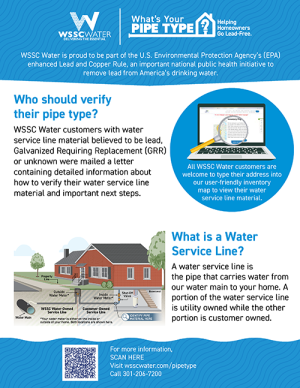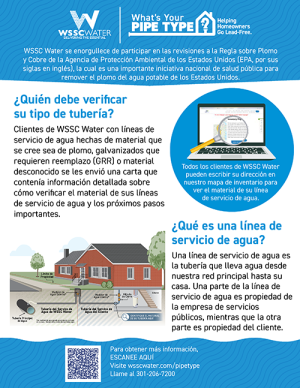Possible Sources of Lead Within Households
Learn how to reduce your exposure to lead.
Learn how to reduce your exposure to lead.
The water WSSC Water delivers to customers is lead-free. However, lead can get into water as it passes through household plumbing and/or faucets and fixtures that contain lead. Another source of lead in homes comes from paint.

Faucets & Fixtures: Those installed prior to 2014 do not meet today’s requirements for “lead-free.”
Copper Pipe With Lead Solder: Before 1987, copper pipes were usually connected with solder that contained lead.
Galvanized Household Plumbing: Galvanized pipes within the home can capture lead released from sources such as lead solder or a lead service line.
Lead Paint: If your home was built before 1978, you may want to get the paint tested for lead.
Follow these steps:
![]()
Run Your Water
Before drinking or cooking, flush your pipes for 5 min by running the tap, taking a shower, doing laundry or dishes. This is necessary if the water has not been used for at least 6 hours. Use only cold water for drinking, cooking, or making baby formula. Boiling water does NOT remove lead.
![]()
Clean Faucet Aerators
Regularly remove and clean the aerator on your faucets. They could have trapped lead particles if you have or previously had a lead service line.
 Filters & Maintenance
Filters & Maintenance
Consider using a water filter certified to remove lead. There are various types including filters for: water pitchers, faucet-mounted, under-sink, refrigerators, and more. Follow the manufacturer's schedule for filter replacement.

Replace Old Fixtures
Faucets and fixtures installed prior to 2014 do NOT meet today's requirements for "lead free" fixtures. Consider replacement.
 |  |
 |  |
If you have any questions, please contact us at PipeType@wsscwater.com.